Thomas Bolger travels to Brussels to immerse himself in Roger Ballen’s deep, dark world

“You’re on Earth. There’s no cure for that.”
― Samuel Beckett
“I’m reaching 70 years old,” growls Roger Ballen, “I’m at the end point of trying to look at things in a so-called ‘normal’, ‘artistic’ way. I have to say what I believe in and I see holes everywhere. Holes in the art business, holes in society, holes in the way people behave. It’s full of hypocrisy, all over the place.” Mr Ballen is a serious man. Precise, melancholic, fearless, his black and white photography is instantly recognisable. Stark, unsettling portraits of people on the edge and beyond, clutching new-born puppies, pigeons and pigs, framed by childlike chalk graffiti and broken detritus. To witness his raw but polished work is to “descend inside the secret depth of the black chamber of the human species.”
This uncompromising and distinct aesthetic has led to the term ‘Ballenesque’, and Brussels’ CENTRALE show titled The Theatre of the Ballenesque – alongside Correspondances with Belgian visual artist Ronny Delrue – immerses the viewer in Ballen’s world through photographs, videos and installations in situ. The latter takes centre stage in the main space, with rows of concert seats populated by battered mannequins looking on as a gorilla conductor occasionally guides a wheezing, out of tune rendition of Also Sprach Zarathustra, Op. 30 – a wonderfully bizarre nightmare borrowing from Kubrick’s imagery and soundscape for 2001: A Space Odyssey. The jarring quality underpinning this display has echoes of the French theatre practitioner Antonin Artaud’s Theatre of Cruelty, a theory which aimed to shock and disrupt the relationship between audience and performer, creating a new language of totem and gesture. I ask Ballen if there are any commonalities to this surreal practice that assaulted the senses, or the work of Samuel Beckett? “There are some parallels as he was concerned with the theatre of the absurd, the sanity of the world. There’s an aspect of the subconscious sense of things going out of control, being on the margin, not being able to control life in any real way. Things just fall apart. So that’s both Artaud to some degree, but more like Beckett, Pinter, Ionesco. The concept of absurdity, which is an important part of the essence or the meaning of my photographs, pervades.”
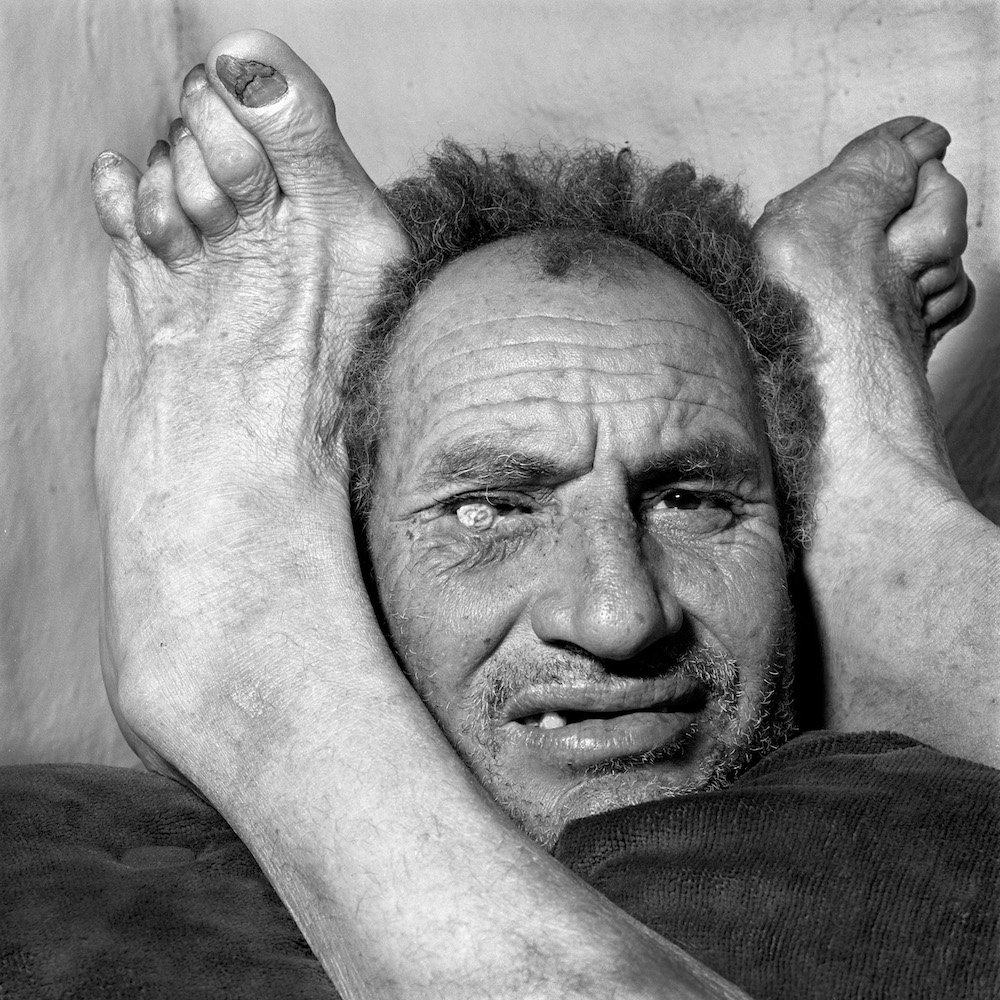
Following the exhibition I sit with both Ballen and Delrue, who appear not unlike a Beckett duo, letting pregnant pauses fill the room before thoughtfully replying. Both had dramatically different entries to their practice. While Delrue eventually shrugged off his father’s warning not to go to art school and studied painting at Ghent’s Academy of Art, Ballen studied geology and psychology alongside shooting from an early age. He states that: “My mother worked at Magnum in the 60s and started one of the first photo galleries in America with Cartier-Bresson and other famous artists. So by the time I was 17 I was capable of taking a very strong photograph. Before I’d finished any degrees I understood what to do in photography and I’ve been doing this for over 50 years now.”
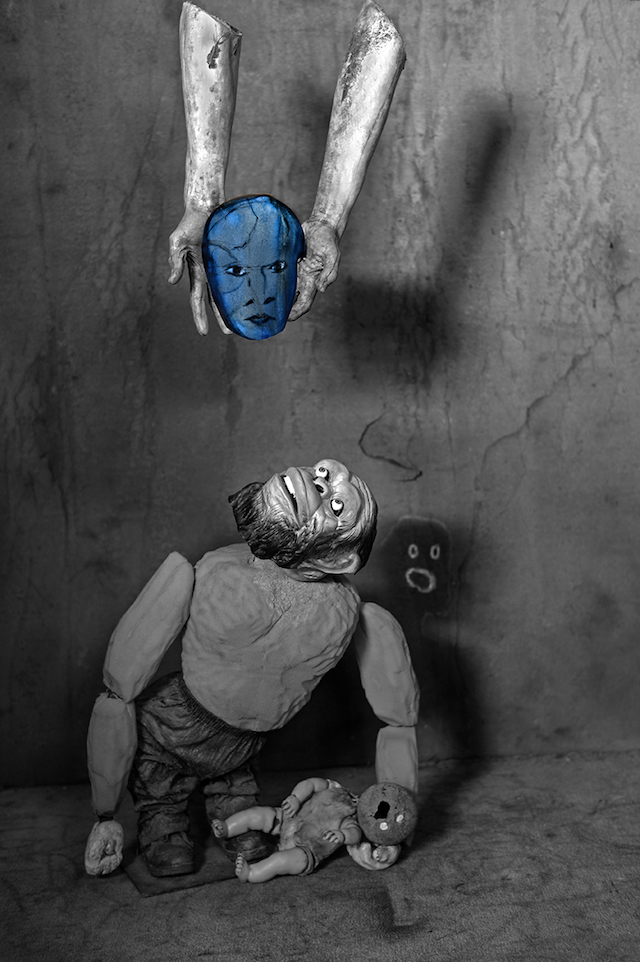
In addition to presenting their own individual work, the duo also collaborated (together with Ballen’s assistant Marguerite Rossouw) to create unique photo-montages, Delrue’s drawings spliced seamlessly with Ballen’s photos of puppets, skulls and expressive dummies. The former describes spontaneous, personal creation in dialogue with another artist as “uncontrollable control”. What was the push and pull of the partnership? “I find it incredibly interesting when you don’t immediately know the way through something,” notes Delrue. “At the beginning it was difficult, but we came to a solution that was 100% Roger’s idea and 100% my idea. It is important to go with the flow of serendipity. My portrait of Roger is really a portrait of my obsession with his work, and I always try to merge the mind of myself and my subject.” Ballen rubs his salt and pepper stubble briefly, before saying, “When we talk about balance of spontaneity, there’s always this aspect of creativity when you see a link you didn’t see before. Taking multiple objects to create a new zone, a new space. When I saw Ronny’s drawings and related them back to my pictures, we were able to link them and create something with its own essence. Whatever you do has to have a strong essence to it. If you don’t, then it will have no impact on people. You’ve got to transform something into a new, essential reality that has a life of its own.”
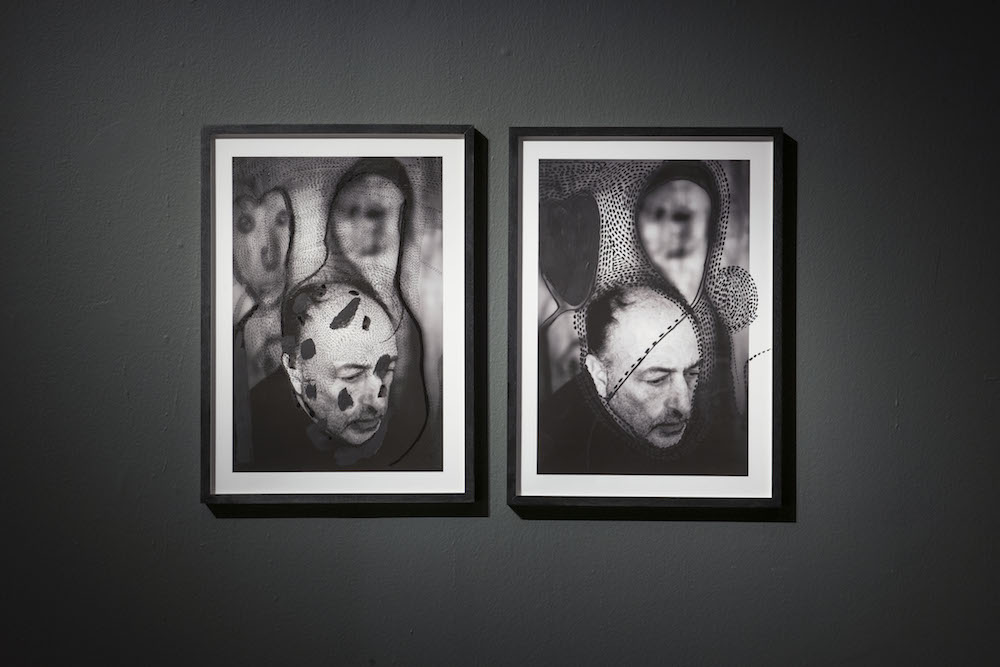
The blurred line between reality and dream, chaos and order, has sometimes led to the label ‘documentary fiction’ being applied to Ballen’s work. I put it to him that all good theatre is a combination of the rehearsed and the spontaneous and the same could be said of his photography – he stops me mid-sentence. “There is a huge difference. The word ‘staged’ became widely used in photography five, ten years ago and for me something that’s stage photography is in a way something repeatable. It feels contrived. Jeff Wall used this word, but the subconscious mind doesn’t see it as genuine, it sees that the creator is trying to impose reality on the mind. The mind rejects it. There is a difference in the process of theatre and of taking a picture. Theatre is seeing something that’s rehearsed rehearsed rehearsed and obviously there are slight differences, the lead actor might have a cold one night, but when you look at a photograph you see an authentic moment in time. The viewer sees something is happening within that click of the shutter, microseconds, and it can’t be repeated.”
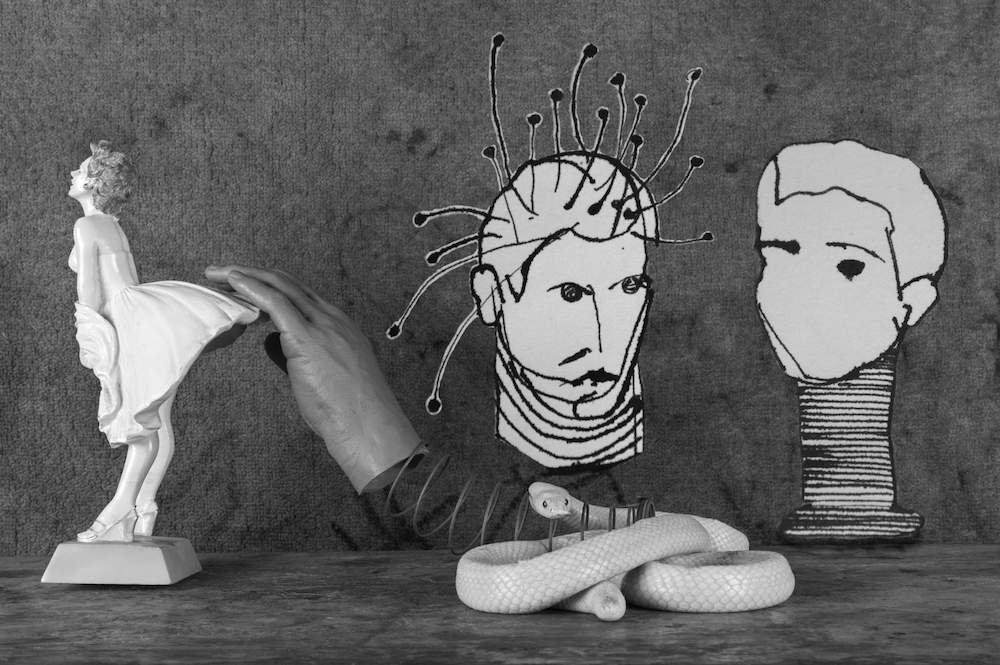
Carine Fol, co-curator of the exhibitions, first came across Delrue after seeing his portraits of psychiatric patients in Geel. A year later she invited him to contribute to a project that paired mentally disabled artists with other artists and Delrue worked with the late Christine Remacle, talking via drawing since traditional communication was out of the question. Four of these drawings are quietly displayed alongside dozens of dusty glass domes, symbolising the mystery and fragility of the mind. Some of Ballen’s finest photos also feature marginalised and vulnerable people, allowing us intimate insight into previously inaccessible worlds. I enquire what responsibility artists have when these are their subjects? He bristles, perhaps mistaking me for the host of journalists over the years who have axes to grind, accusing him of exploitation. “What is your responsibility towards anything? We all talk about environmental problems while destroying the planet. If we take that to its logical conclusion, we should all be committing suicide. We have this moralistic viewpoint that’s full of hypocrisy wherever we go. What is my role for in terms of working with people who are mentally ill? Well who has the right to call somebody mentally ill? Why don’t you think you’re mentally ill? I’m not talking about extreme cases, but who gives anyone the right to sit there and think that they’re so normal – and what do you mean by the word anyway? For me, that’s where the problem stems from, a hypocritical attitude about what normality even means in the first place. Why don’t you call people who run major organisations in every country mentally ill? Nobody would dare do that. Where you’re from, London, what about Boris Johnson, is he mentally ill?”
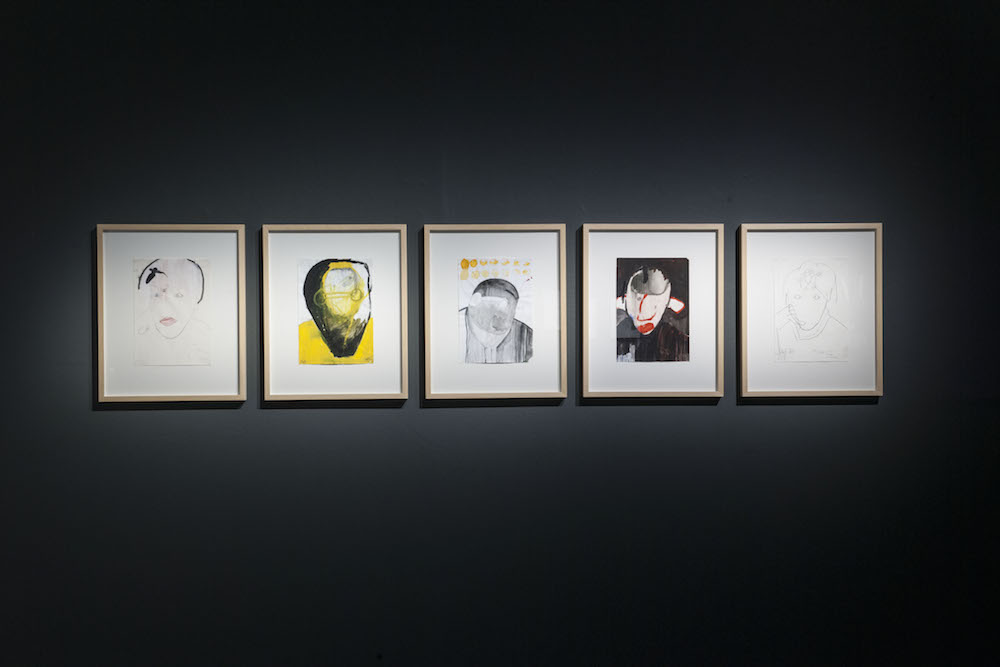
I reply by saying there’s a wide spectrum and that arguably, the man is a sociopath, before Ballen continues – “The issue is just full of holes. Obviously there are people walking around that don’t know what day it is and what is my right to photograph it? My right is I have to look at myself in the mirror every morning. The issue is when you photograph people on the fringe and the picture has too much impact on a so-called normal person’s mind, then it’s called exploitation, but it has nothing to do with that person or me, it has to do with that person viewing the picture who hasn’t come to terms with themselves. The picture actually threatens their own status quo so they have to actually blame the photographer, me, for going across some sort of ideology.”
“I have 30 people a day who I work with, day in, day out, sending messages like ‘When are you coming home?’, telling me about their problems. I’m a doctor, I’m a lawyer, I’m a financier, I’m a friend. I was sent a message yesterday that said, ‘you’re my father’. There’s another one this morning – ‘I don’t know what to do with my life I have no money when are you coming home’. All day, all night. I have never had any of these people, from the thousands and thousands of people that I’ve worked with, ever said anything negative about Mr. Ballen here. Not one of them, you know, not one of them. The reason I can survive in these places that I worked in for 40 years, in South Africa, is they like me, they trust me and it’s always been a two way street. If it wasn’t a two-way street I’d be dead now. It’s not phony. I bought some people from Norway along with me about two years ago, a whole bunch of them. That’s the last time I ever brought them. They thought they were so moralistic, so much so that the two men got beaten up, lost their cameras and the girl nearly got raped. It never happened to me because I give something back at the end of the day. You cannot work in those places, especially in South Africa, unless that feeling is there. Otherwise you’re dead – boom.”

The journalist Hunter S. Thompson once remarked that “reality itself is too twisted.” New digital forces – constant breaking news, social media – have twisted it further, and some would argue that it is harder for artists to keep up with and interpret an increasingly absurd world. The suggestion is a point of contention for Ballen, who head in hand, declares, “This is a big problem, here now, for me. Art now has become a tool of the media. It is losing its focus as a human endeavour, it’s becoming nothing more than a sheep following current events, to some degree. Why does an artist want to be following Donald Trump? Why does an artist want to satirise Apple computer? Isn’t there’s something better to think about? People tell me to go to some of these exhibitions that I see in art magazines and I say ‘well why should I do that? I can just read Time magazine’. What is the purpose? For me, that should not be the goal of art. In a way, it has lost something special about it. It has become a tool of commercial media, of branding, fashion, political social environmental concerns, which in many ways the media can do better itself. The media itself has more effect than artists. For me, they should be dealing with deeper, more profound, more philosophical and psychological issues than contemporary satire. That’s my feeling and nobody is going to change my mind about that anymore.”
I state that no work exists in a vacuum, and that while artists should be aspiring for more universal meanings, some of his fantastic books – Platteland, Shadow Chamber – are all rooted in a very particular time and place, giving a specific commentary to the lives of poor, post-Apartheid South Africa. “Those pictures are more about how the mind deals with its state of being,” he replies, “rather what’s going on in post-apartheid South Africa. It’s better to look at those pictures from many years ago as revealing aspects, as you said earlier, that Beckett dealt with. Who are these people that live on the edge? People who can’t deal with chaos. People who have lost this sense of comfort and confidence and purpose. These are all issues of contemporary society and South Africa was the stage to present that on. I’m not and never was a political, social, cultural photographer. I’ve always been a psychological one, even in my early days. The reason those pictures influence your headspace is because they reveal something about your sense of purpose, the debate within yourself of who you are. What’s in-between, what’s inside, what’s out there.”
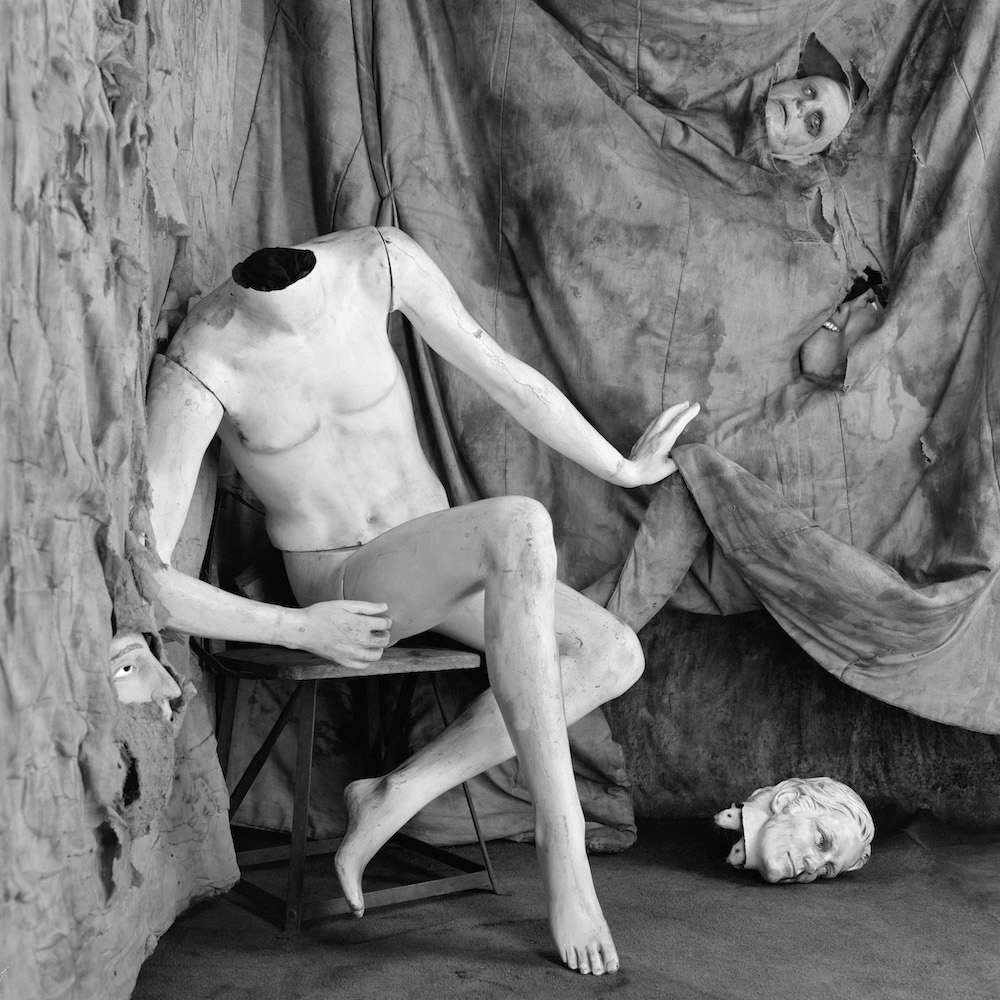
In Ballen’s Ballenesque video – so concise it borders on poetry – he calmly states that the most profound word in the English language is ‘nothing’, a state that we begin and end at, but that his photographs will outlive him. The idea of art transcending mortal limitations, communicating with the dead and the living, is a small comfort for Delrue too: “The period between birth and death is a crazy time, you have it fill it. I can’t do nothing. I have to do it. I have no life when I don’t create. I want to lead an interesting life, meet people and make things – and meeting Roger has been wonderful.”
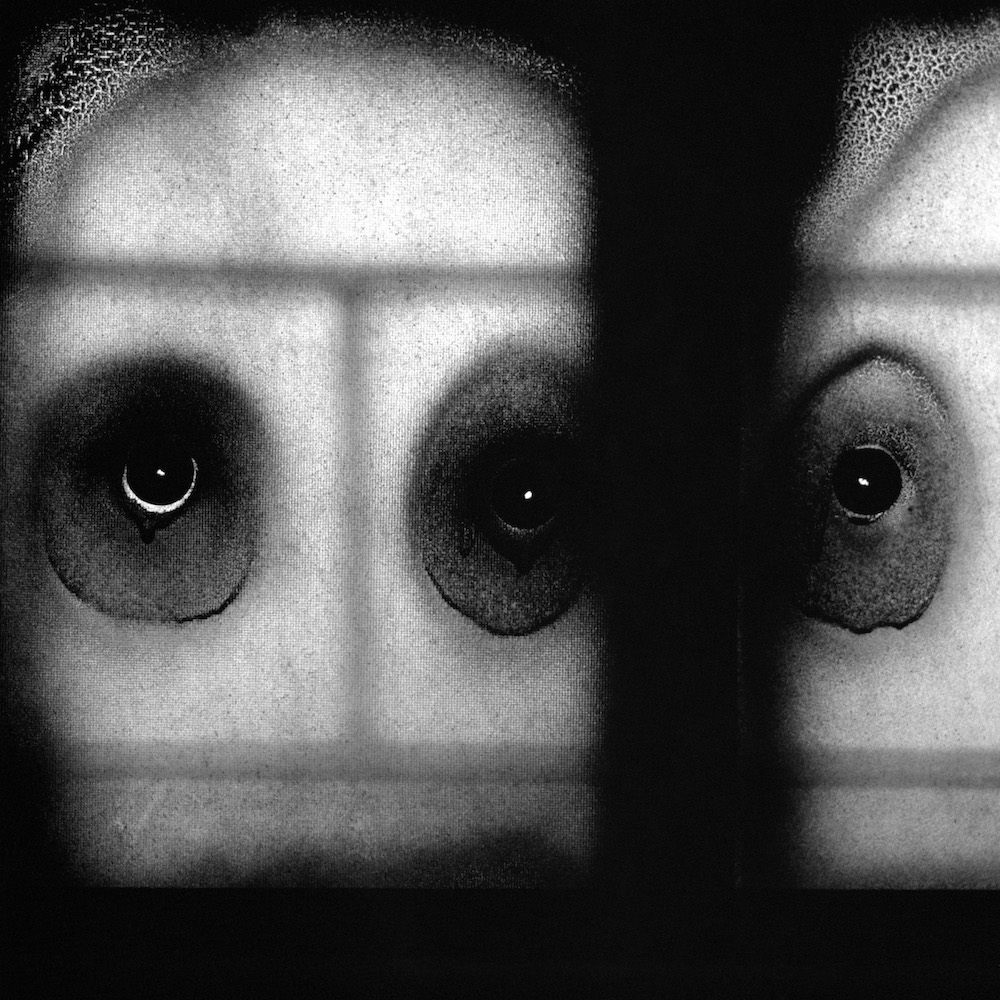
The two share a smile and Ballen notes that “It goes back to the concept of absurdity. Ultimately there’s no concrete meaning in life, you don’t understand it. But that doesn’t mean you shouldn’t try to create meaning for yourself. My photography over the years has been like writing a diary. The diary will never end, it will have no conclusion, or it will have the same conclusion as when I started – that life’s absurd. You can sit all day and be depressed, or you can try to create meaning for yourself and for others. Producing art like this is the best you can do for yourself in this short period of being alive, and that’s all. A lot of people in philosophy and existentialism come to the same conclusion, Camus, Sartre, there’s nothing else you can do, no other way you can answer the void. These are the things that the artist should be contemplating and working with, not Brexit or Trump or whatever is on the news agenda. These are the real, challenging issues. Artists need to come to terms with this, we all do. If you can’t, you can always jump off a bridge.”
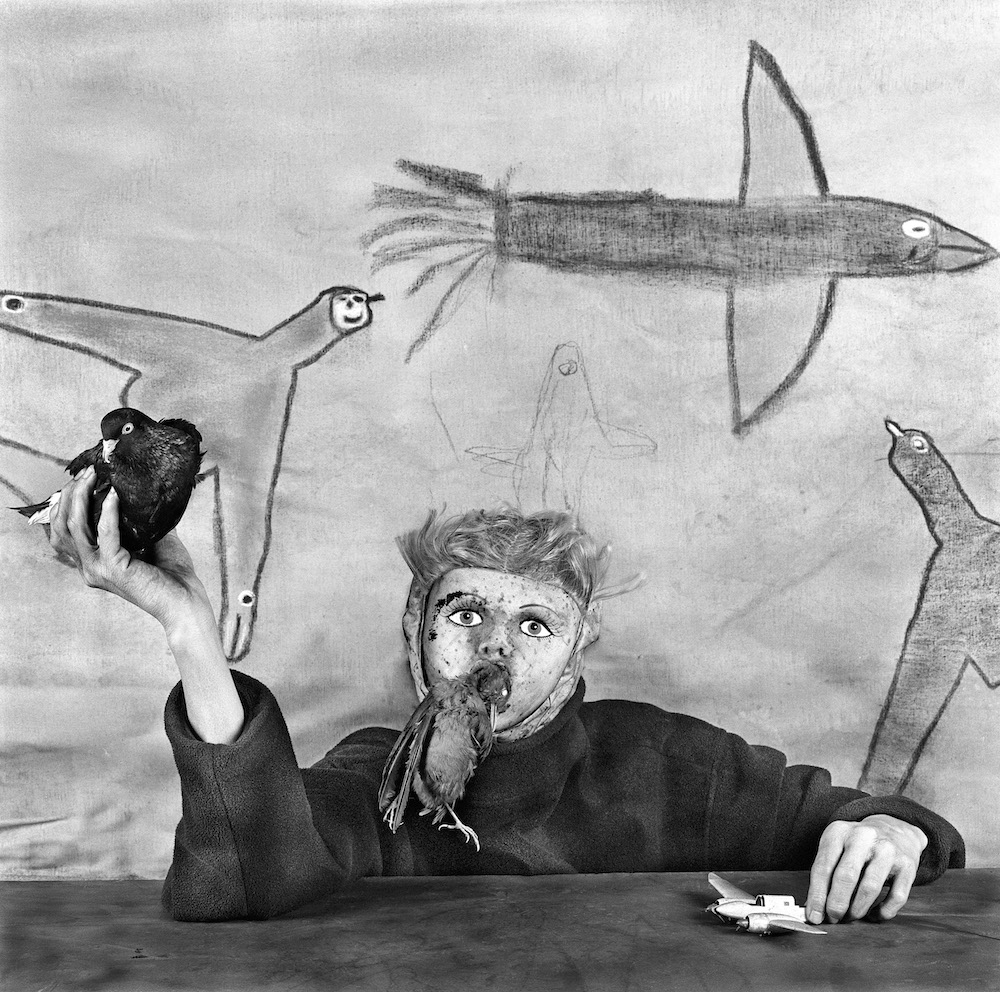
Bleakly comic, deadpan and uplifting, this reflection concludes our talk. Walking back through Brussels during a cold Autumn shower, I can’t shake off the pictures that line CENTRALE’s walls, nor the morning conversation. Ballen’s strange world is gripping and speaks to primal urges resistant to the scrutiny of time. Testing taboos and the limits of the psyche through catharsis and an interrogating eye, he oscillates freely between instinct and desire, anxiety and humour. His direct, resolute endeavour reminds me of Beckett’s now infamous passage from Worstward Ho: “All of old. Nothing else ever. Ever tried. Ever failed. No matter. Try again. Fail again. Fail better.”
The Theatre of the Ballenesque & Correspondances run at CENTRALE for contemporary art until March 2020